Sunday Casserole: Creative Ways to Save Food
Don't toss your leftovers! Join us for delicious ideas to repurpose your weekend leftovers.
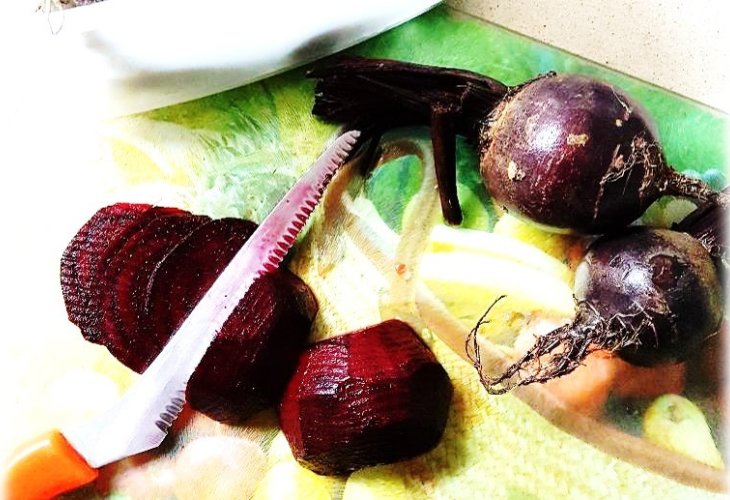 Paired with purple beets
Paired with purple beetsEvery year, my husband jokes that when I serve him casseroles made out of seemingly unrelated ingredients, it's a sign that Passover is near:
- "Honey, what's for dinner?"
- "Pasta-tuna-corn-olive-quinoa-chickpea-pea casserole in mustard-coconut-soy sauce."
Of course, it's all in good fun....
But truth be told, casseroles are the best and most delicious way to clean out the pantry, and not just before Passover. At the start of the week, we enjoy a "Sunday Casserole" for lunch. I have too much respect for food to simply throw it away. So, every Sunday, I gather leftovers from Shabbat like challah, meatballs, chicken, potatoes, rice, etc., cut them into cubes, mix with eggs to hold everything together, add oats (because I put oats in everything), and adjust the seasoning (rich in antioxidants and anti-inflammatory ingredients). We might sprinkle some breadcrumbs on top and spray a bit of oil - for a golden, crispy finish. It bakes for 40 minutes at 180 degrees and is served alongside fresh sliced vegetables.
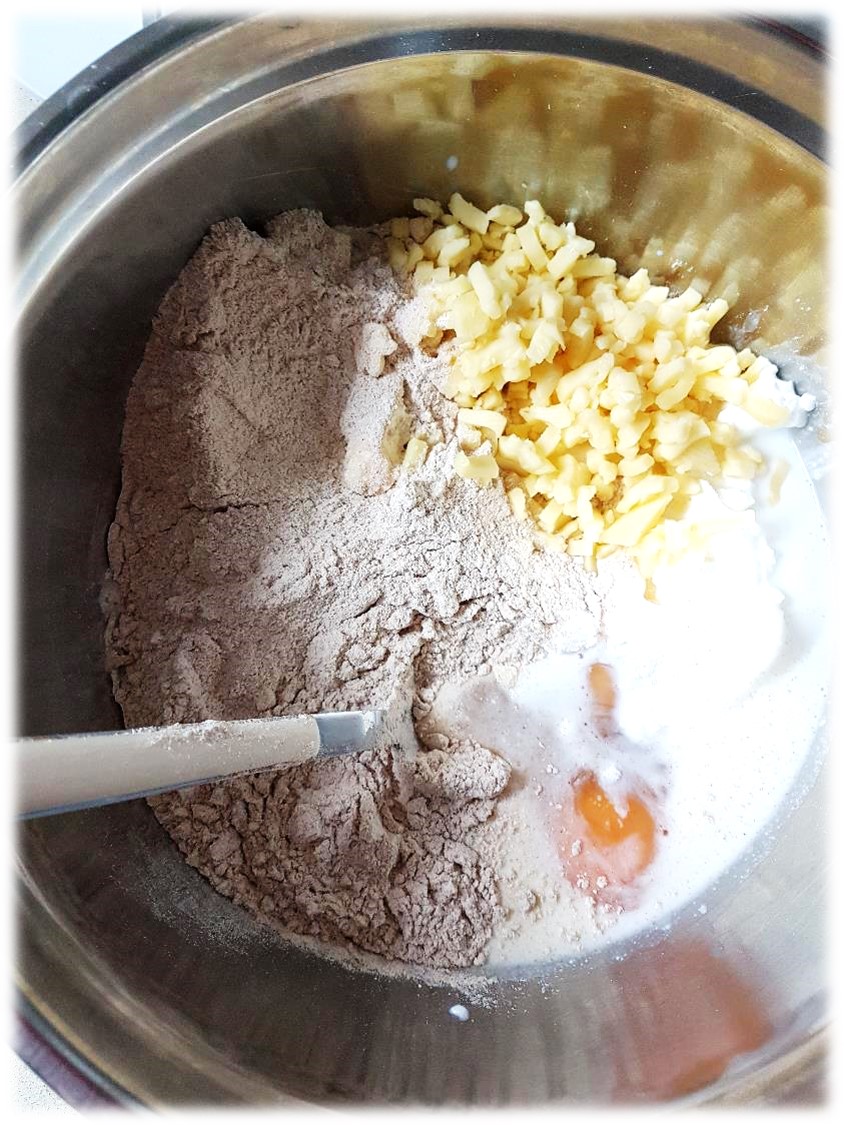 White mix from eggs and cheese
White mix from eggs and cheeseI remember my sister-in-law being shocked at the idea of recycling food until I served her kids some Sunday Casserole. To her surprise, not only didn’t they leave a crumb behind, they asked for seconds....
I'm not alone in this mindset. Apparently, there's a trend in which renowned restaurants serve a "Yesterday's Soup" crafted from leftover dishes (not what's left on diners' plates, of course, but from unserved portions). You’d expect it to be cheaper, but it's not.
We live in a culture of abundance, losing sight of the value of things. We buy more than we need. Our closets overflow with clothes, though we may only wear the content of a single shelf. We have so many bags, shoes, belts, accessories, more than we truly need. At a dizzying pace, we are depleting the precious resources of our planet.
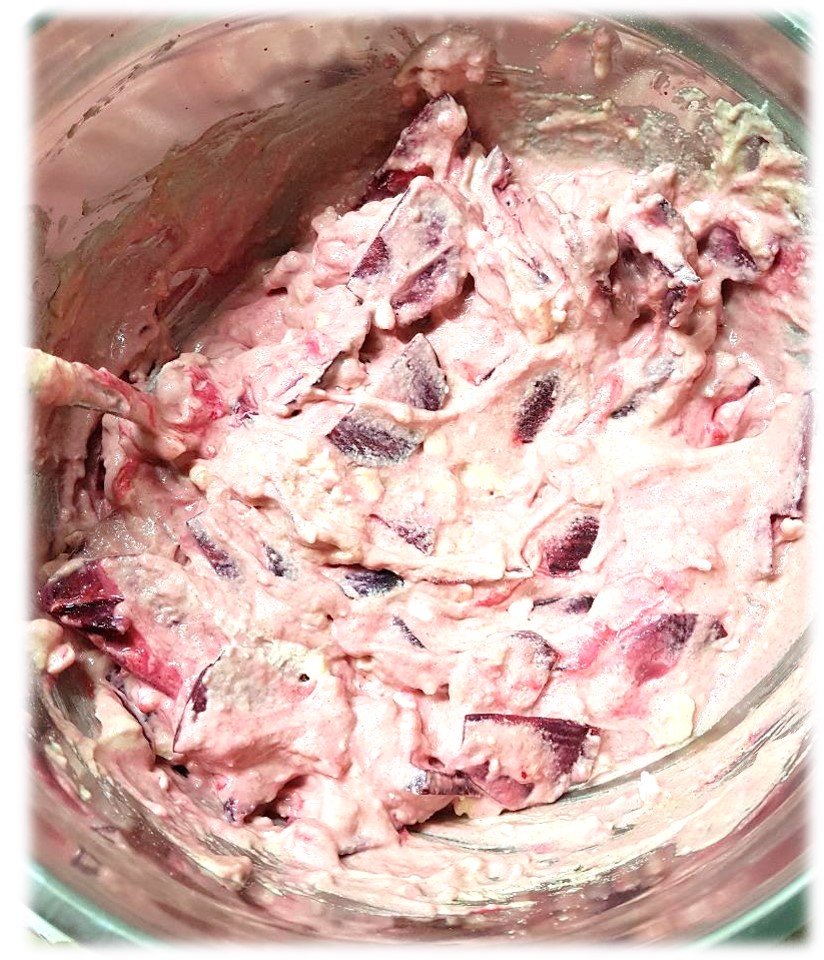 A pink mixture
A pink mixtureThe amount of food thrown away could feed the world's hungry four times over! I'm not suggesting an ascetic lifestyle, definitely not. But I do recommend considering your purchases, buying just the right amounts, and recycling when possible. Childrens' clothes that are still in good condition should always be passed on and received from others.
In Deuteronomy, it’s stated: "...do not destroy its trees by wielding an axe against them, because you can eat their fruit. Do not cut them down. Are the trees people, that you should besiege them?" The sages expanded this prohibition to include all unnecessary destruction. A Midrash on this verse states: "Do not destroy its tree – from here, we learn that anyone who destroys something from which another can benefit is transgressing the prohibition of not wasting".
Maimonides adds: "Not just trees, but anyone who breaks vessels, tears clothing, demolishes a building, blocks a well, or wastes food unnecessarily transgresses the prohibition and is deserving of reprimand".
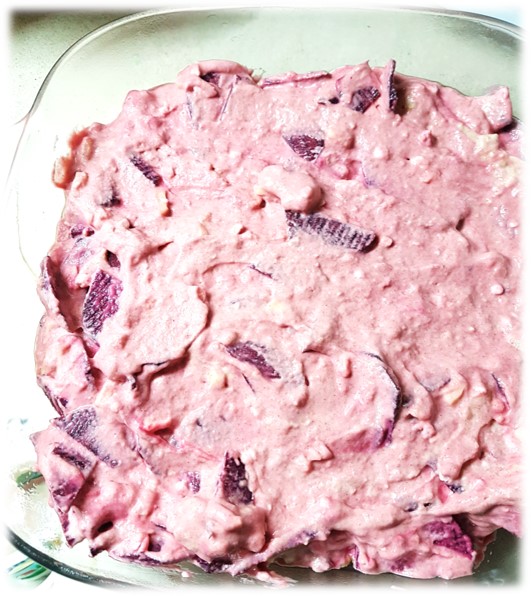 Transferring to a greased pan
Transferring to a greased panAnother great casserole option instead of throwing food away is made with cheeses nearing their expiration date, or even slightly past it. Recently, cheeses have garnered a bad reputation due to associations with hormones, antibiotics, lactose intolerance, etc. While I don’t recommend overindulgence in dairy products, completely avoiding them isn't wise either. Like many things in life, it’s all about the right balance. Cheese offers easy-to-digest quality protein, calcium with excellent absorption, vitamins like B, B12, A, and D, potassium, and magnesium. Integrating quality cheeses into the diet of children and teenagers is vital, as this is when their skeletons are developing, with long-term ramifications. Aim to consume cheeses of 5% fat content or higher.
For example, a slice of yellow cheese contains about a quarter of a child's recommended daily calcium intake. It's important to choose those with natural food colorings (such as annatto or beta-carotene) and without preservatives. Those prone to acne and/or migraines should avoid yellow cheese, as it may exacerbate these conditions. But for those without such issues, yellow cheese can be a great sandwich filler for school or as part of a balanced and healthy dinner.
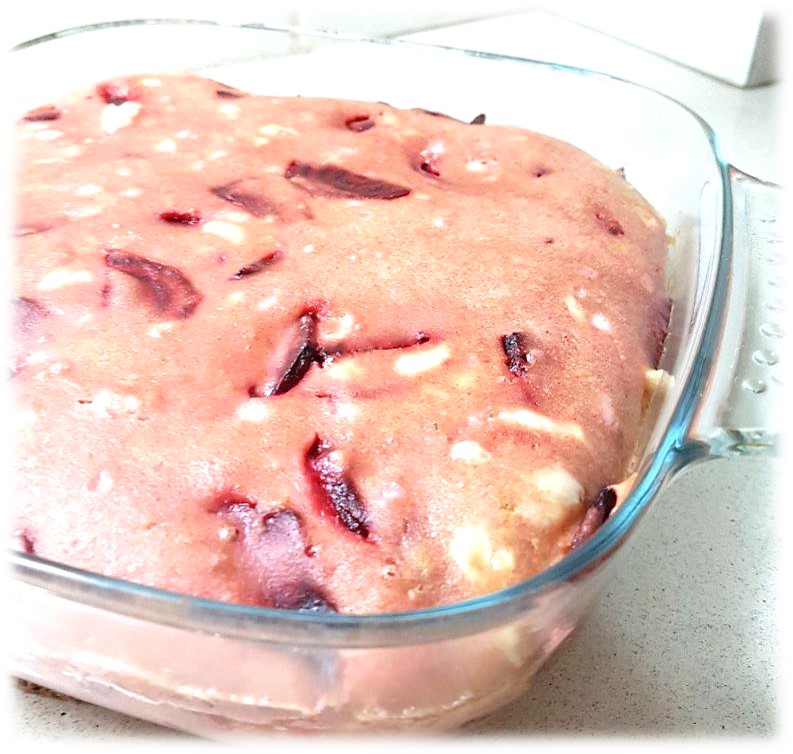 Baking
BakingThe next casserole my daughters call "Hello Kitty Casserole." Why? Just because it's pink.
The pink color comes from mixing white cheeses with the purple pigment anthocyanin, found in beets. Beyond being rich in essential vitamins and minerals, beets boast a generous and quality amount of healthy antioxidants, making them a valuable addition to the family diet.
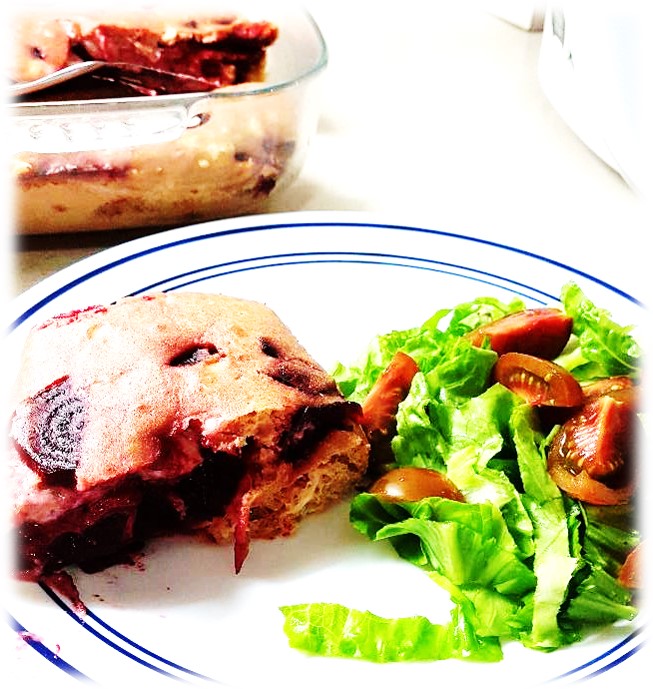 Delicious and particularly successful casserole
Delicious and particularly successful casserole
Hello Kitty Casserole:
4 peeled and thinly sliced beets
Half a pack of flavor-infused cheese (or regular or ricotta cheese)
1 container of cottage cheese
1 yogurt
1/2 cup milk
3 eggs (organic free-range, of course)
1/2 cup oats
1 cup spelt or rye flour
A pinch of salt
A handful of grated yellow cheese
A packet of baking powder
Mix everything together
Transfer to a greased baking dish
Bake for half an hour at 180 degrees.
The casserole might come out a bit runny. A few hours in the fridge will help it firm up, blend flavors, and then it can be reheated and served.
A very successful casserole, truly one of the best.
There are so many good, easy, and healthy casserole recipes. Hashem willing, in the next article, we’ll continue exploring them. Until then, wishing you lots of health,
Chen Tovi

